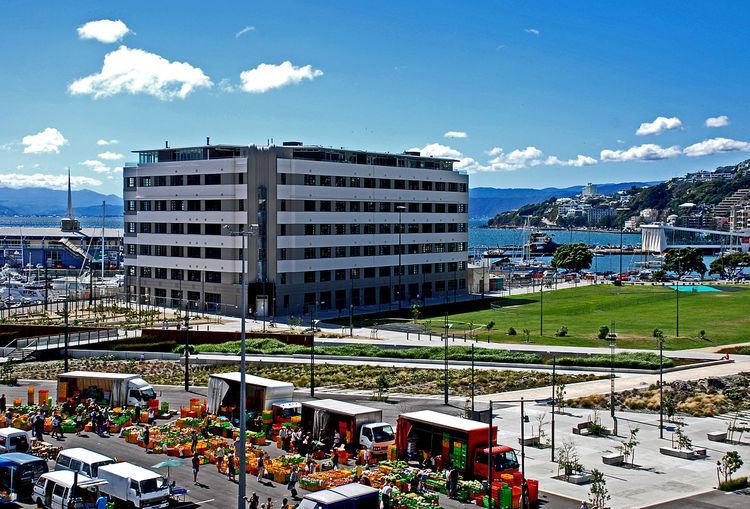Created 2006 Area 6.5 ha (16 acres) | Phone +64 4-499 4444 | |
 | ||
Operated by Wellington City Council Hours Open today · Open 24 hoursFridayOpen 24 hoursSaturdayOpen 24 hoursSundayOpen 24 hoursMondayOpen 24 hoursTuesdayOpen 24 hoursWednesdayOpen 24 hoursThursdayOpen 24 hoursSuggest an edit Similar Wellington Waterfront, Frank Kitts Park, Museum Art Hotel, Embassy Theatre - Wellington, St James Theatre - Wellington | ||
Sk8 waitangi park
Waitangi Park, a re-modelled recreation-space in Te Aro, Wellington, New Zealand, dates from 2006. It lies near Te Papa (the National Museum of New Zealand), Former Post and Telegraph Building and Courtenay Place. The facilities include a waka-launching area, a children's playground, a skateboard-zone, and a large grassy space.
Contents
- Sk8 waitangi park
- Stories of our living city waitangi park
- Events
- History
- Redevelopment into Waitangi Park
- Geography
- References
Stories of our living city waitangi park
Events
Numerous events have taken place at Waitangi Park, these include:
Regular events include:
History
Wellingtonians formerly referred to the Waitangi Park area as Chaffers Park. Prior to 1855 the park area consisted of part of a gently sloping beach (Chaffers Beach), often covered in water from the harbour and stream.
Redevelopment into Waitangi Park
Wraight Athfield Landscape Architecture (WALA) won the competition held to design the park. WALA saw the design through to completion in 2005. The redevelopment of the park won a number of awards from the New Zealand Institute of Landscape Architects, the New Zealand Institute of Architects and the Wellington Civic Trust, among others.
As part of the redevelopment, on the north-east side of the park the former Herd St Post Office was developed into lifestyle-apartments and into a commercial space called Chaffers Dock Apartments.
The redeveloped park was officially opened in March 2006. The redevelopment project cost a total of $22 million.
The New Zealand Construction Industry Council (NZCIC) criticised the construction tendering process for the park, arguing that under-tendering caused problems. According to the NZCIC, the "initial tender accepted for the development at Waitangi Park was $2.1 million less than the estimated cost of the project, and at least $2.6 million below tenders from two other companies."
Geography
The surrounding waterway (wetlands) is fed by the outflow from the Waitangi stream; recently lifted from stormwater drains and caused to flow through gravel and grass. The Waitangi stream flows flows from the Aro valley.
Waitangi Park is near the historic Waitangi Lagoon, fed by the Waitangi Stream. The lagoon used to harbour eel, fish, and shellfish, and was used by Māori for food gathering, fresh water, and waka launching. "Early English settlers planned to dig a canal along the path of the stream to allow boats to be anchored in the Basin Lagoon (now the Basin Reserve)", but the plan did not come to fruition.
In 1855, an earthquake raised the land around the stream several metres, forcing the stream underground. Waitangi Park is hence on reclaimed land.
